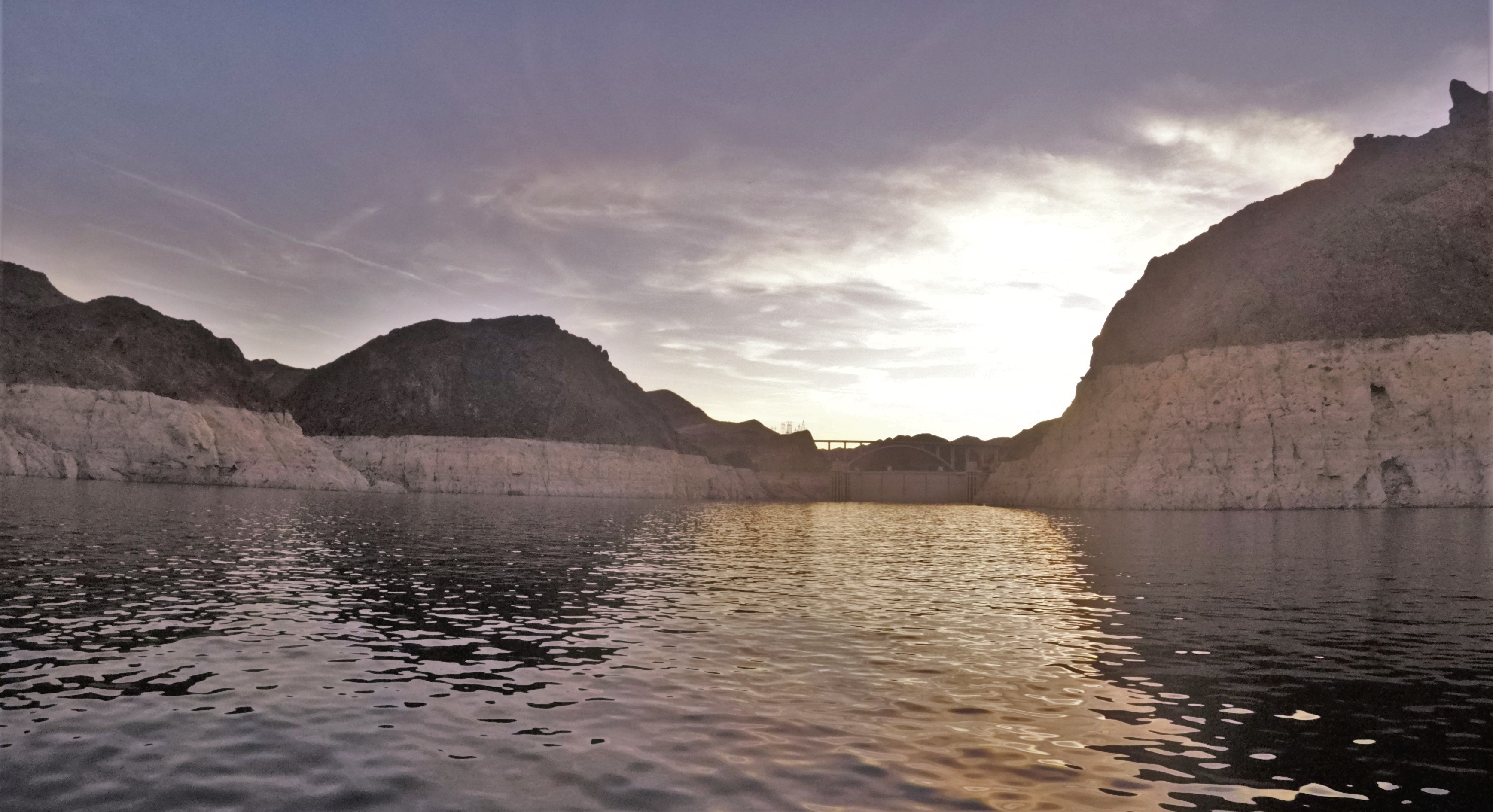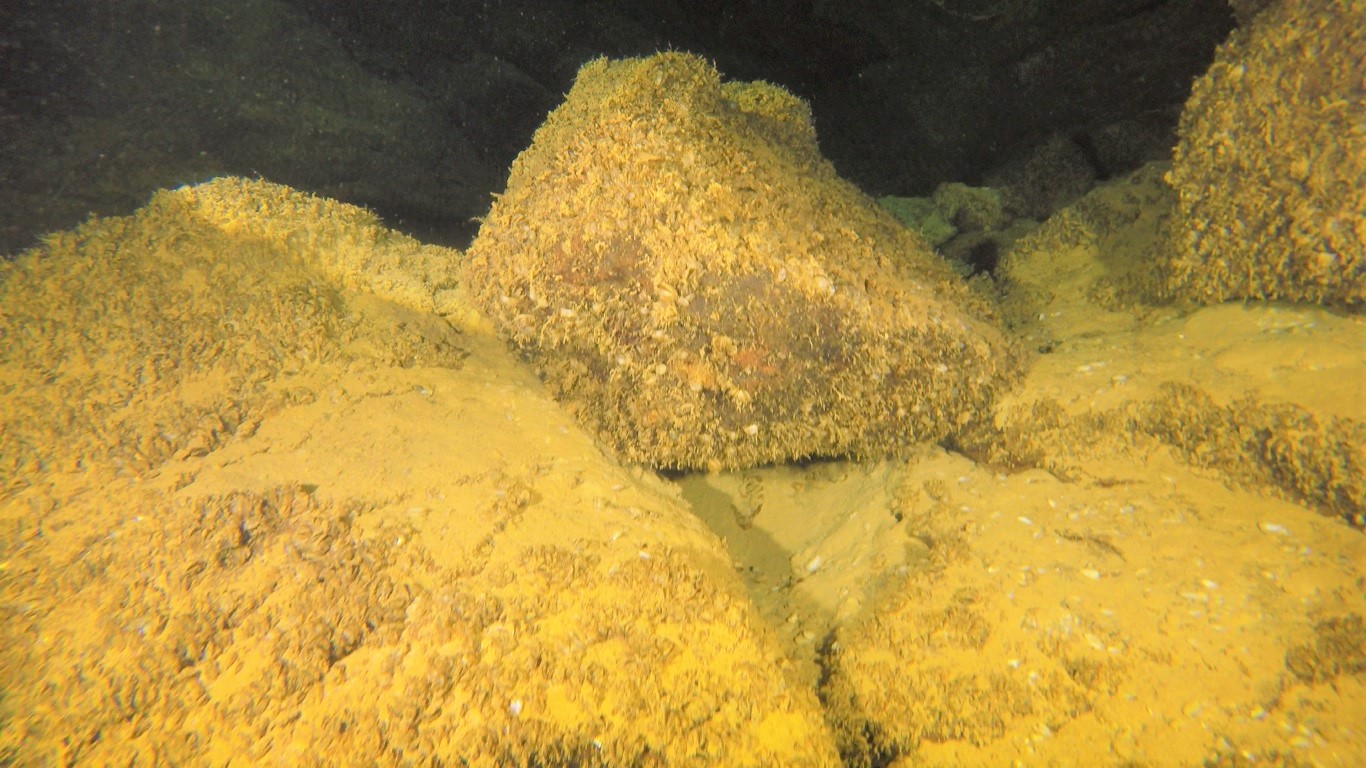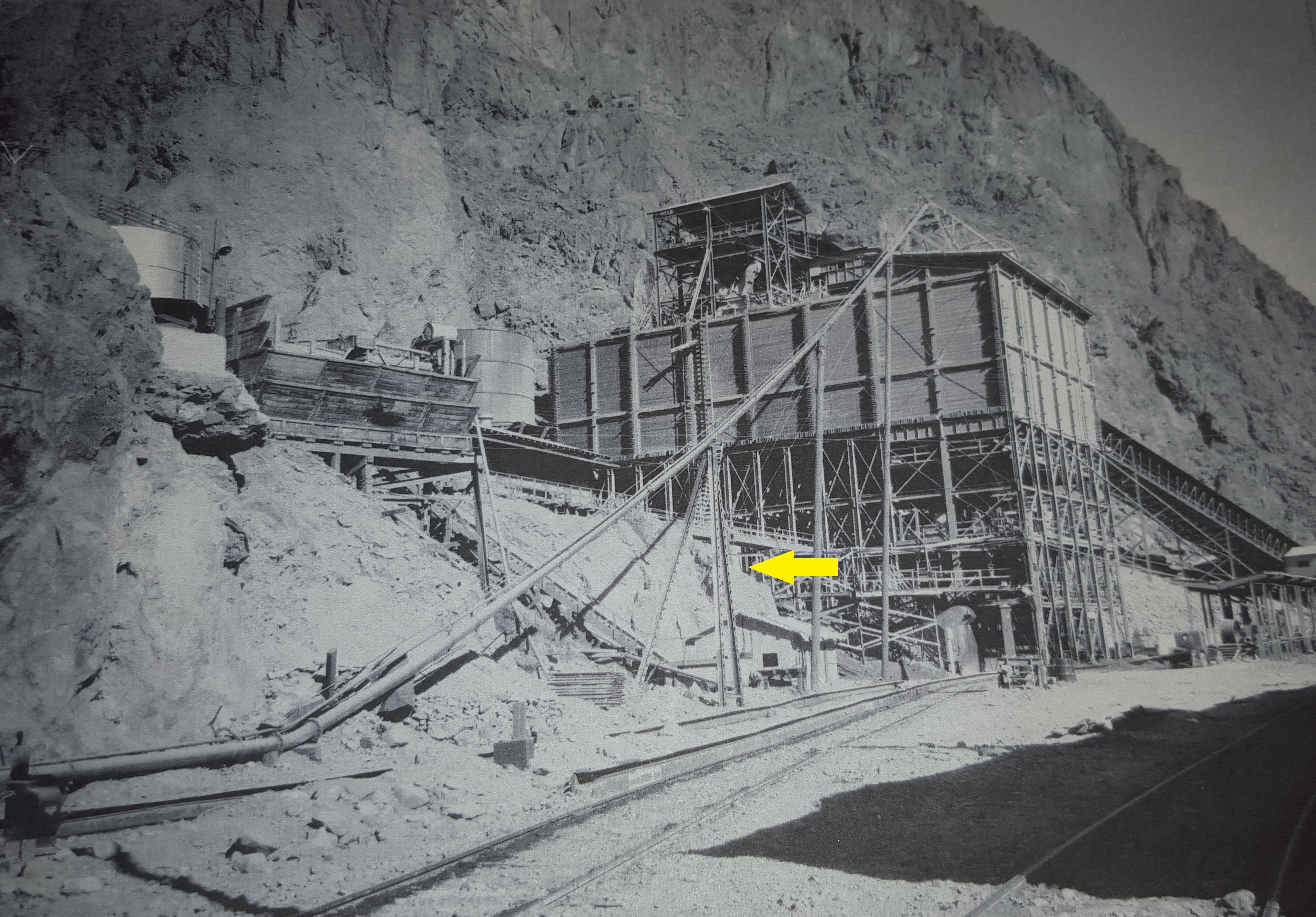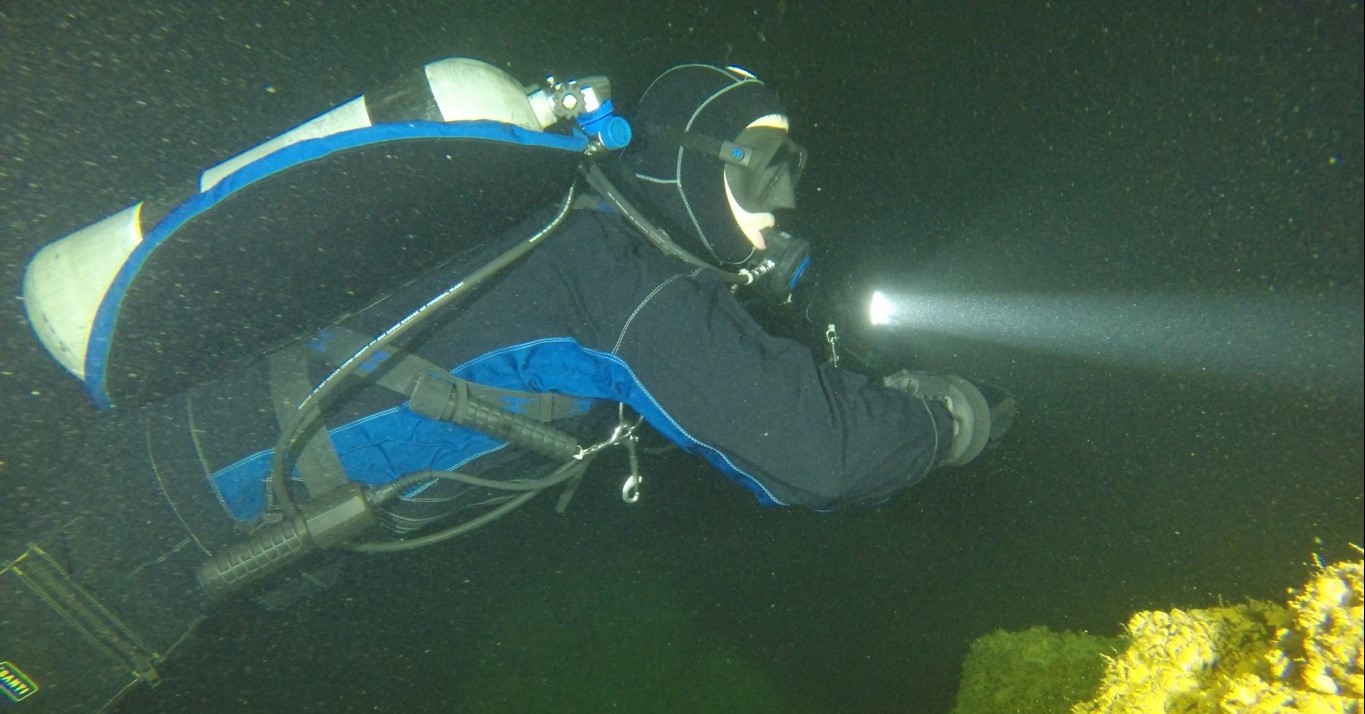The 2017 Thanksgiving Weekend Lake Mead Dive Adventure
It was a great Thanksgiving weekend diving adventure for me, Martin McClellan, as a member of NMDE in being hosted for this event by Vegas Underwater Explorers (VUE) and Blue Gravity SCUBA. I want to first thank everyone involved in making the two days I spent doing my FIRST Lake Mead dives a pleasure and success – Kelly, Melissa, Casandra, Jan, Linn, Gary, Kim and Lana. You were all exceptional personalities, divers committed to the GUE philosophy, friendly, compassionate and supportive of creating a safe and welcoming dive environment.
I arrived in Vegas (Nevada) at 2:30 pm on Friday November 24 following a great Thanksgiving feast the day before with my family in Reno (Nevada). I was then swooped up by Kelly, Owner of Blue Gravity SCUBA and by 3pm we were sorting out gear and getting it loaded into the truck for transport to the Lake Mead Marina located on the lakes on Lake Mead’s south west shore about 2-miles as the crow flies from Hoover Dam. Our destination was Black Canyon directly northeast of Hoover Dam and directly above where the Colorado River flowed back in 1935 before the dam was built.

Note: “high-water” mark in this image. We estimated this at 23-30m/75-100′ above the existing water level!
Drink Vegas…Drink!
Our dive for Friday night was to be on the southeastern wall of Black Canyon at a site commonly used for diver training. Since this was my first dive in the lake, the VUE crew picked this site for a nice controlled introduction to the Lake Mead diving environment. This dive was to be an open-circuit dive to a max depth of about 25m/80′. Since our dive the following morning, Saturday, was going to be deep, 95-105m/315-350′, this dive needed to be held fairly shallow and without any significant inert-gas loading for Kelly and myself.
It was night by the time we anchored the boat and with the lights of Hoover Dam and the the Mike O’Callaghan–Pat Tillman Memorial Bridge shining upon the glass-flat waters of Black Canyon, we entered the water at about 6pm.

Dropping down, I first noticed the warmth of the water as compared to Lake Tahoe (my home field diving venue as you know) which was about 15c/28f degrees warmer. I clocked 19-20c at the surface (67-69f). I thought to myself, “this is nice”. As we descended, the next obvious difference was the water color and clarity. Greenish-Brown (Mead) vs. Blue-Green (Tahoe) but interestingly enough, the clarity was similar; Tahoe has been losing clarity for the past 100 years due to the economic development surrounding Tahoe without regard for the environmental damage that development has and is causing; I am not sure the water clarity conditions of Lake Mead over the past 100 years but I know the water depth is an issue as Vegas is sucking it dry (see the first image above!).

Once on the bottom I was introduced to the sheer metamorphic limestone cliffs; as this canyon is only about 100m/330f wide, the walls and slopes to the bottom depths of the canyon are quite steep; very cool and eerie! There was an obvious invasion of the Quagga Muscle as most of the exposed rock, rock not covered in 82 years of silt accumulation, was covered with the Quagga Muscles. The Quagga Muscles are an invasive species but…possibly??? why the clarity of the water is fairly good; they eat the phytoplankton and algae that would normally be floating in the water column.
The animal life was also fun to see in that there were bass, blue-gill, catfish and HUGE carp! Also present, amongst the fish and the muscles, was a very small “bug” like zooplankton, the size of a pencil-led, that loved the heat of our lights – I could not identify it specifically but there is listed 4-types of zooplankton to exist in Lake Mead.
After about an hour of diving at an average depth of about 10m/33f, we exited, laughed and then geared down in total darkness. A truly enjoyable first dive followed by a short trip back to the marina, drive back to off-load gear and I hit the sack at about 11:30pm. Wake-up call tomorrow morning would be 6am!
Day two started with a bunch of complications but ended with an incredible 4-hour NIGHT technical dive to the Low Mix Concrete plant at 100m/330′! Kelly and I were the only divers up at 6 am Saturday morning but we had some frustrating equipment problems and I had a bit of an ear issue so we had to postpone the morning dive plan. All that cleared up by late afternoon and by 5pm, we were anchored, now, on the northwest side of Black Canyon and began our prep for the JJ Closed Circuit Rebreather (CCR) dive to the Low Mix plant.

Image above is the Low Mix plant before 1935
Notes on this image: None of the structures you see are there. The concrete wall (standing and present) to the left of the yellow arrow is where we dove. The rail tracks are 10-15m/30-50′ under 82 years of river silt.
We descended about 6pm and that began an incredible dive. As we descended through the various layers of clarity and temperature and about 4 minutes into the dive we began to see the concrete foundation structure of the plant and the continuing sporadic structures carried us down to our max depth of 97m/320′. Truly floating above history, this dive experience epitomized that; very similar to the feeling when diving the SS Tahoe up in Lake Tahoe (Northern Nevada). The shadows that the rock walls played with the lights, the thick silty areas, the large cliff walls that surrounded the plant and the foundation structure made this dive like no other I have done; it was invigorating, highly visual and creepily fun!
We cruised around the plant for about 15 minutes, following the concrete walls, pipes and eventually running into some of the old steel framework supporting the plant. There were hundreds of concrete core samples – samples taken I am sure by engineers to insure the strength of the pour; some stacked neatly and some just piled up. The whole experience was surreal as to think this was once above water and once the dam was completed, this plant became submerged and disappeared from sight until the VUE divers located it, began diving it and documenting it in 2015.
About 25 minutes into the dive we were basically on our way up preparing for our 3.5 hours of decompression. As we ascended, I was looking at some of the flat bottom areas and wondering…how thick is this silt? Well…it was thick! I put my arm down into the silt up to my armpit, no resistance and had I wanted to, I could probably have forced my entire body down into the silt. The ensuing mushroom cloud of silt that occurred when I pulled my arm out was absolutely incredible and I laughed hard at what it did to the visibility. It is estimated that river sediment over the past 82 years is 15m/50′ thick; finding the old rail tracks that were left on the bottom, the tracks that transported the concrete to the dam, are gone forever buried under all this sediment and silt; all pondering thoughts ran through my mind during the dive added immensely to the excitement of this dive!
Surfacing about 10pm, we exited the water and I laid to rest about 1am!
We had planned to do a second dive looking for the lost city of Callville, north of Big Boulder Island in the 100m/330′ depth of the Boulder Basin but because of the late dive on Saturday, we had to reschedule the search for Callville for another trip.
“Kelly”, our leader of this weekend’s adventure, “Thanks….for a well-organized, fun and safe experience in the largest man-made reservoir in the USA!”

